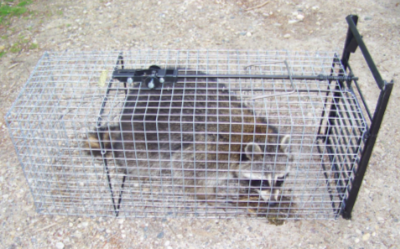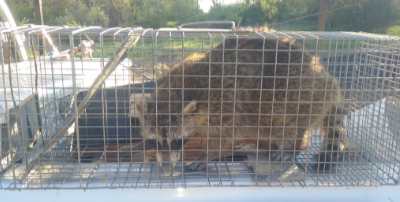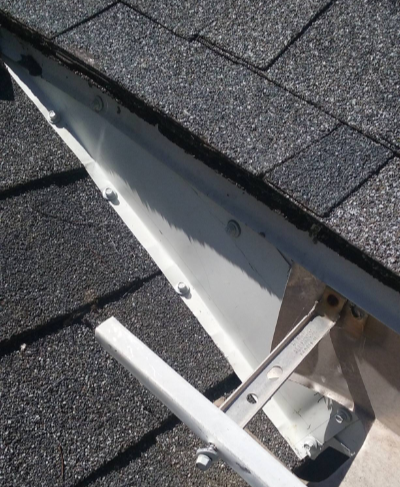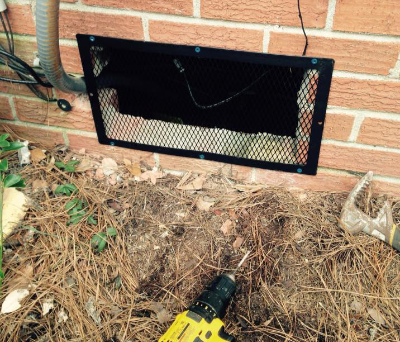DIY Raccoon Removal:
Raccoons can be a tad difficult to remove in some cases. Especially when they get established before you can notice. However, that doesn’t mean you can’t get rid of them on your own.
Before we jump into the steps of how to remove raccoons from your premises, there are some common mistakes that might turn out to be unsafe and costly. Below are some of the mistakes to avoid.
Mistakes to avoid:
Removing Raccoons manually: Raccoons are generally unpredictable and dangerous. Trying to get hold of them may results in bites and scratches, especially when they become angry and violent. These scratches and bites may result in rabies and other serious diseases spread by these creatures.
Sealing the Entry Points: Do not chase away the raccoons, which could lead to them leaving behind their young ones in their denning site. Just like humans, no female raccoon will completely leave their young behind. Therefore, the raccoons may be back sooner than later. Also, ensure you seal all the entry points once the raccoons are gone.
Using traps: Locate the most strategic entry point to place your trap.
Tree cutting: Cutting down trees to prevent raccoons from reaching your rooftop or building is essential as the animals are good climbers. They can climb on walls and other parts of the building to get to their destination.
Excluding the raccoon poop and urine: Ejecting raccoons from your premises and failing to remove their poop and urine stink may signal another danger apart from that caused by raccoons’ damages. Raccoons poop and urine may not only smell bad but also contain deadly pathogens.
Using home remedies only: Avoid over-relying on home remedies when it’s not effective enough to keep the bandits at bay. You can use integrated pest control measures for the best results.
Poisoning them: This is not a recommended way of dealing with these agile creatures. Furthermore, it will not stop them from coming back when you have the attractions in your home. Therefore, avoid this by all means.
With the above mentioned mistakes and how to avoid them, let’s jump in to how to remove raccoons from your premises using DIY methods.
The most recommended way to remove the raccoons is by trapping. This method is humane and doesn’t result in the instant killing of raccoons.
Now, how can you trap the raccoons? Well, we’ve made it simple in the procedure below.
Trapping Raccoons


Select an appropriate raccoon trap
Large or extra-large traps are the best for raccoons. They may come with one or two doors for easy trapping.
However, single door traps offer the best bait protection. Therefore preferred by most professionals.
In addition to that, they provide an easy way for giant raccoons to enter the trap.
On the other hand, dual door traps offer a higher penetration rate, allowing more raccoons to be captured.Determine the best place to position the trap
After choosing your trap, the next step is placing it in the most strategic place.
The most likely place to put your trap is near the place you often find raccoon poop. Or on their most preferred entry route.In addition to that, you can set up your trap where raccoons spend much of their time.
Some of the places you can find raccoons include:
- On the walls
- Sheds
- Woodpiles
- Underneath the structures
- Fence lines
- Tree hollows
- Attics
- Hay beds
- Porches
Choose the best baits to use on traps
Since raccoons are omnivores, there are broader possibilities when it comes to choosing a bait. However, the bait must be enticing enough to get raccoons into your trap inadvertently.
Below are some of the factors that you should consider when choosing a bait for raccoons.
- The baits should be sweet foods such as corns and watermelon
- Place something more massive on the trap to secure it and the food as the raccoons may attempt to steal the bait.
- Place the bait at the furthest end of the trap so that the raccoons have to enter the trap to reach the bait
- Some of the suggested baits include:
- Fish
- Fresh vegetables
- Bacon
- Chicken pieces
- Sardines
Set up the trap
Ensure you place your traps on even surfaces to prevent them from falling, thereby failing the mission.Always follow the user’s manual from the manufacturer to set the trap appropriately.
After that, set the doors in an open position to allow raccoons to get in.Checking the traps
Keep monitoring the traps at close intervals.
Once trapped, take the raccoon with the trap and take it at least 2 miles away.
Evacuating the captured raccoons
When your trap functions and captures raccoons inside, follow the steps below to evacuate trapped raccoons.
- Approach the trap quietly and handle it gently yet firm enough to prevent the raccoons from escaping. While doing so, have in mind that trapped raccoons might be dangerous.
- Drop a warm cloth into the trap to keep the animals warm
- Wear protective clothing such as an apron and heavy gloves before handling the cage.
- Keep a safe distance between the cage and your body.
- Always take the trapped raccoons at least 2 miles away to prevent easy return.
Enforce some preventive measures:


After getting rid of the raccoons from your compound, follow the preventive measures below.
- Have a trash removal schedule
- Clean up the garbage bins regularly
- Seal gate and fence holes
- Fix broken vents
- Fastening of food and water source covers

